Easy vegetarian keto recipes. Adopting a keto lifestyle can be a transformative experience for those seeking to lose weight or improve their metabolic health. The ketogenic diet typically involves a high fat, moderate protein, and low carbohydrate eating plan.
However, for vegetarians, the challenge of the keto diet is finding the right balance between staying within the low-carb parameters while also avoiding meat. Vegetarian keto recipes are tailored to meet these specific dietary needs, utilizing low-carb vegetables, nuts, eggs, and dairy products as central ingredients.
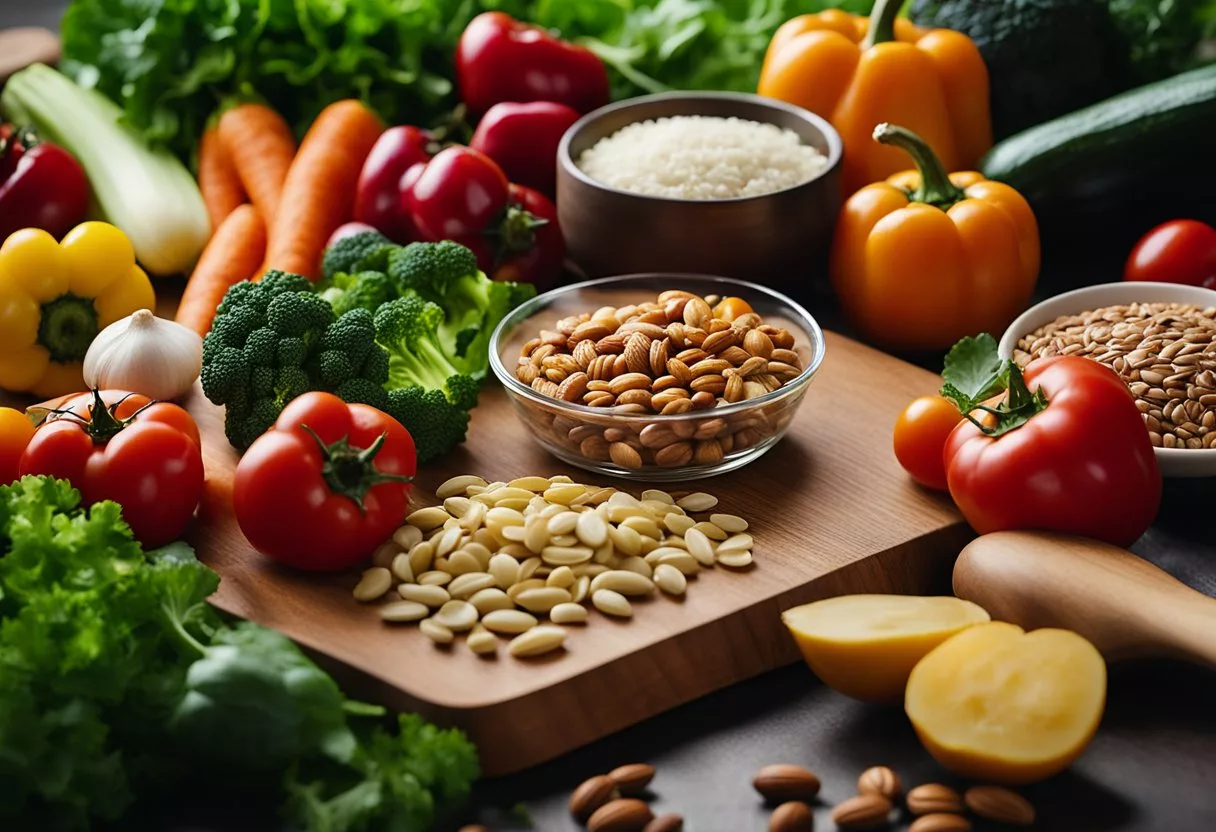
The crux of vegetarian keto cooking lies in replacing high-carb staples with low-carb alternatives. For instance, traditional pasta dishes are reimagined using vegetables like zucchini or cauliflower as substitutes for noodles or macaroni. These adaptations allow individuals to enjoy the comfort and flavors of classic dishes while adhering to the carb restrictions of the keto diet.
Nutritional balance is essential, and vegetarian keto recipes often incorporate plant-based proteins such as tofu, eggs, and certain beans to ensure that one’s diet is both satisfying and wholesome.
This approach to meal preparation opens up a variety of options for breakfast, lunches, dinners, and even snacks, providing a sustainable and enjoyable way to maintain a vegetarian keto lifestyle.
Understanding the Vegetarian Keto Diet
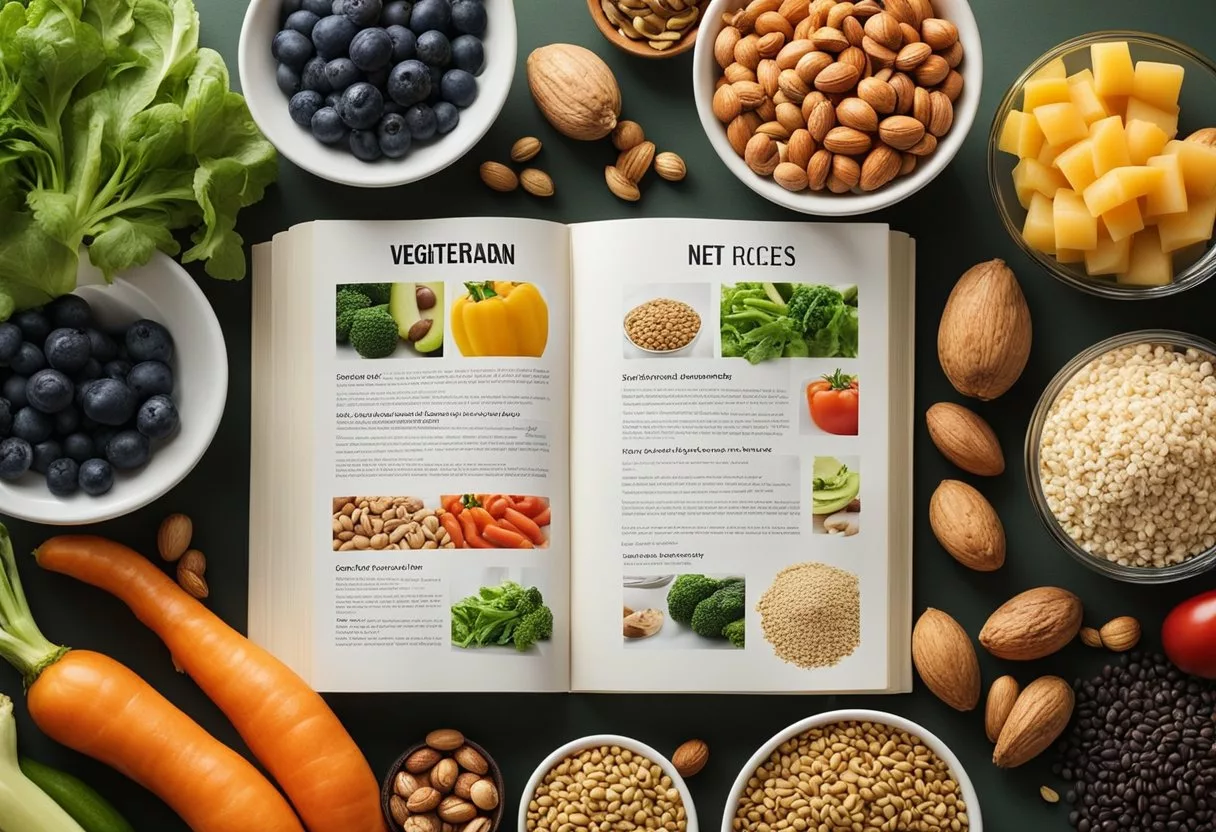
The vegetarian keto diet is a high-fat, low-carb eating plan that combines principles of ketosis with vegetarianism. In ketosis, the body utilizes fat as a primary fuel source, instead of carbohydrates, which can lead to weight loss and improved metabolic health.
One might assume that a keto diet predominantly features meat-based proteins; however, vegetarians can adapt this diet to align with their no-meat principles. The key is selecting the right balance of foods that meet the diet’s macronutrient requirements—mainly fats, moderate proteins, and minimal carbs—while still avoiding meat.
Proteins in a vegetarian keto diet primarily come from non-meat sources. Common protein-rich foods include:
- Dairy products like cheese and Greek yogurt
- Eggs, a versatile choice offering both fat and protein These proteins also contribute to the necessary high-fat content along with foods like avocados and nuts.
However, it’s essential to consume a variety of vegetables, focusing on those low in carbs such as:
- Leafy greens (e.g., spinach, kale)
- Cruciferous vegetables (e.g., broccoli, cauliflower)
These low-carb vegetables are also a vital source of vitamins and minerals, ensuring that nutritional needs are met while staying within the carbohydrate limit.
For vegetarians on keto, the emphasis is on whole, unprocessed foods that dovetail with both keto and vegetarian guidelines. It’s this synergy that guides the creation of satisfying and healthy dishes fit for a vegetarian lifestyle, while still promoting the benefits of ketosis.
Essential Ingredients for Vegetarian Keto
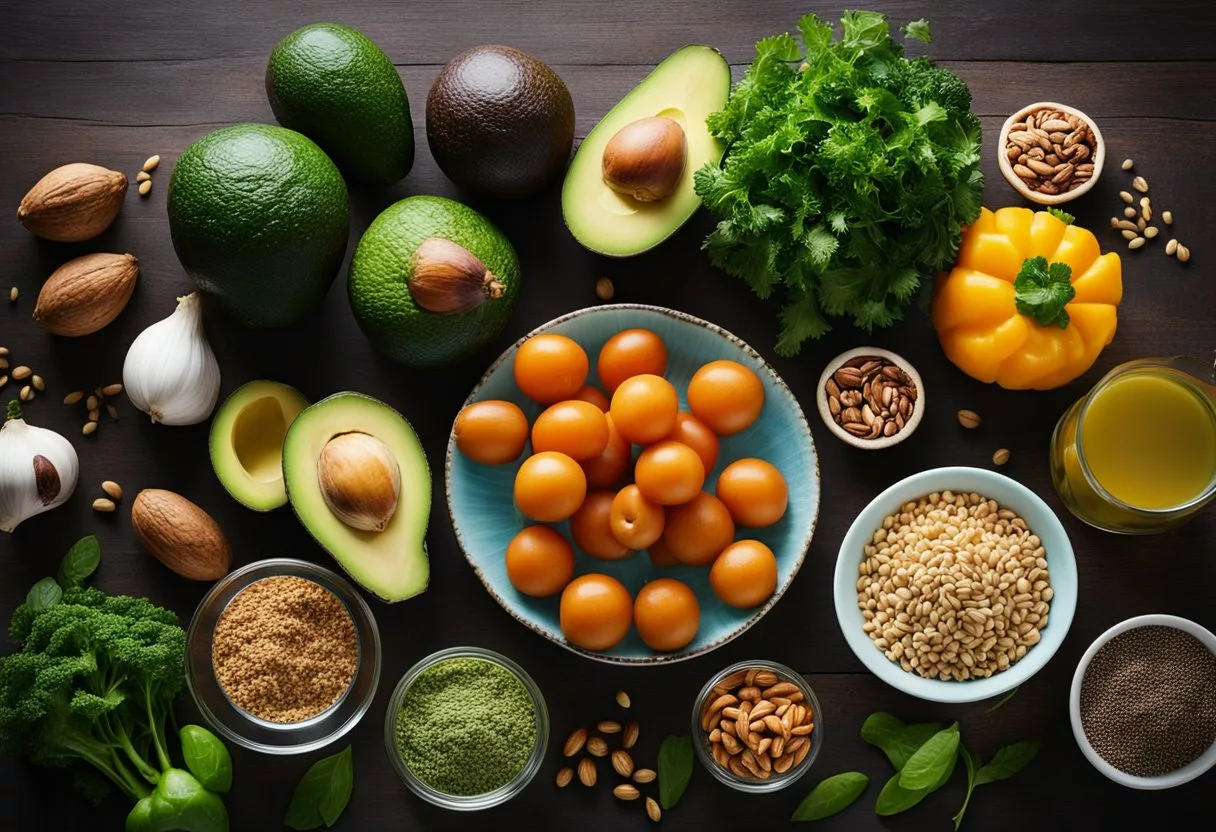
The vegetarian keto diet relies on meticulously selected ingredients to meet nutritional needs while keeping carbohydrate intake low. Protein sources, low-carb vegetables, and healthy fats are the cornerstones of this dietary pattern.
Protein Sources
For vegetarians on a keto diet, protein is primarily derived from plant-based and dairy options. Tofu is a versatile ingredient that can easily be incorporated into a variety of dishes. Eggs serve as both a protein source and a binder in recipes. Cheeses, including both hard and semi-hard varieties, provide protein along with savory flavors, contributing to a sense of satisfaction.
- Tofu: A staple in vegetarian cuisine, excellent for absorbing flavors.
- Eggs: Ideal for breakfast or as part of other meal recipes.
- Cheese: Nutrient-dense and can be used in multiple dishes.
Low-Carb Vegetables
The right vegetables are essential for a well-rounded vegetarian keto diet. Cauliflower and zucchini are popular choices due to their versatility and low carbohydrate content. They can substitute for grains and pasta in many recipes. Asparagus, broccoli, and kale are good for providing fiber and essential nutrients while keeping carbs at bay.
- Cauliflower: A grain alternative for rice and pizza crusts.
- Zucchini: Can be spiralized into noodles or used in stir-fries.
- Leafy Greens: Include kale, which can be made into keto-friendly chips.
Healthy Fats
Healthy fats are a key component, providing energy and helping with nutrient absorption. Nuts, including macadamias and almonds, are a great snack and source of fats. Nut butters, such as almond butter and peanut butter, are flavorful options for smoothies and sauces. Oils like MCT oil and avocado oil are valued in the vegetarian keto kitchen for their fatty acid profiles and ease of use.
- Nuts: Snack on them or chop to sprinkle over salads.
- Nut Butters: Choose those with no added sugars.
- Oils: MCT oil is a concentrated source of medium-chain triglycerides, ideal for ketosis.
Breakfast Recipes
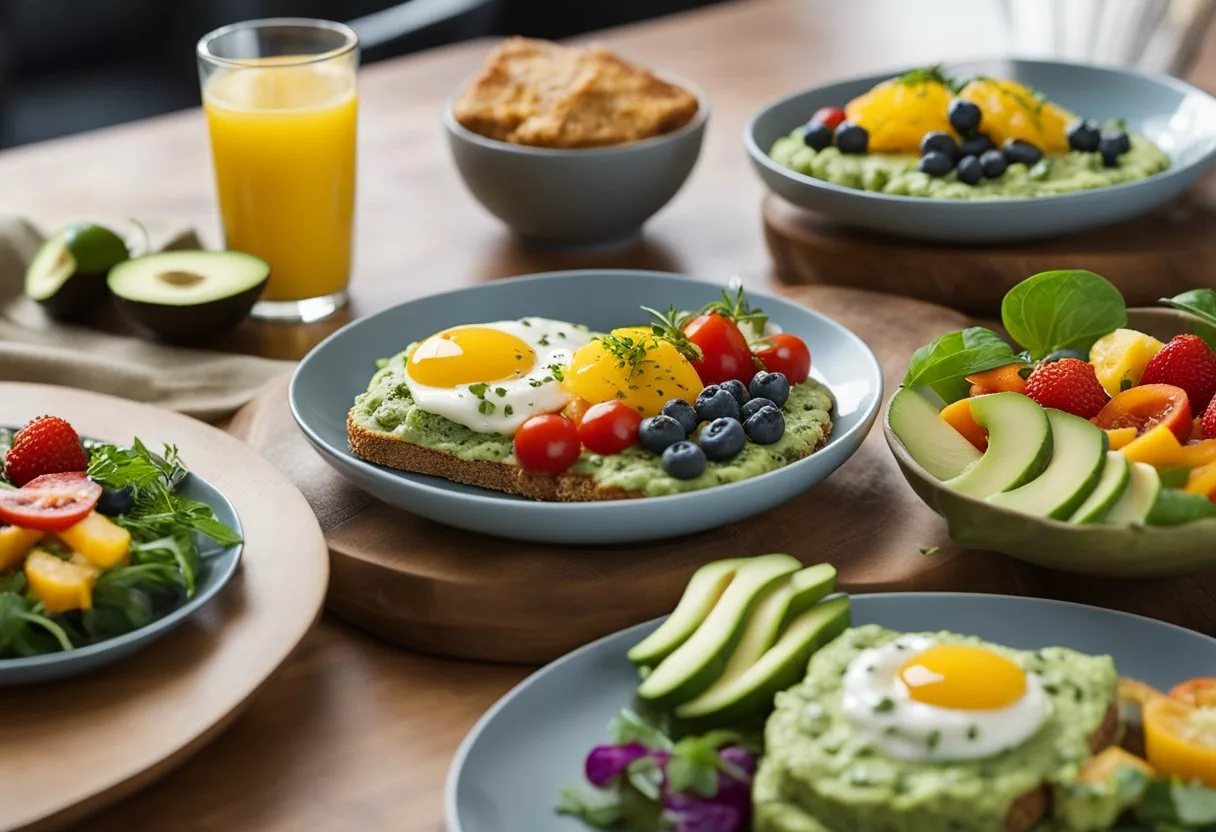
When adopting a vegetarian keto lifestyle, the focus is on low-carb, high-fat ingredients that provide enough protein to kick start the day. These recipes are tailored to meet the nutritional needs of a keto diet without compromising on flavor or variety.
Keto Vegetarian Quiche
A Keto Vegetarian Quiche is an excellent way to incorporate eggs and dairy, both of which are staple foods in a vegetarian keto diet due to their high protein and fat content. Here’s a basic framework for a keto-friendly quiche:
- Ingredients:
- Eggs: 6, large
- Heavy cream: 1 cup
- Shredded cheese (e.g., cheddar or goat cheese): 1 cup
- Chopped vegetables (e.g., spinach, mushrooms): 1 cup
- Salt and pepper to taste
- Instructions:
- Preheat the oven to 350°F (175°C).
- Whisk together eggs and heavy cream in a bowl.
- Stir in cheese and vegetables, then pour into a greased pie dish.
- Bake for 35-40 minutes or until set.
This dish provides a satisfying start to the day with a good balance of fats and proteins while keeping carbs to a minimum.
Cauliflower Breakfast Bowl
Cauliflower serves as an excellent low-carb substitute in a Vegetarian Keto Breakfast Bowl. It is rich in fiber and can replace grains like oats or rice.
Ingredients for a Cauliflower Breakfast Bowl:
- Cauliflower (riced): 2 cups
- Avocado: 1, sliced
- Poached eggs: 2
- Sprinkle of cheese (optional)
- Seasonings (e.g., salt, pepper, paprika): as per taste
Preparation:
- Sauté the riced cauliflower in a pan with a bit of oil until tender.
- Top with poached eggs and avocado slices.
- Add seasonings and cheese as desired before serving.
A Cauliflower Breakfast Bowl provides all the energy one needs without the high carbs, and it incorporates vegetables for a nutritiously balanced meal.
Keto Greek Yogurt Bowls
Greek yogurt is often included in vegetarian keto diets as a source of protein and fat. For a Keto Greek Yogurt Bowl:
- Ingredients:
- Greek yogurt (full-fat): 1 cup
- Keto-friendly sweetener: to taste
- Nuts (e.g., almonds or walnuts): a small handful
- Seeds (such as chia or hemp): 1 tablespoon
- Berries (optional): 1/4 cup
- Method:
- Spoon Greek yogurt into a bowl.
- Add sweetener and mix well.
- Top with nuts, seeds, and a few berries.
Offering a creamy texture and a mix of sweetness and crunch, Keto Greek Yogurt Bowls are both satisfying and compliant with ketogenic dietary restrictions.
Lunch Ideas
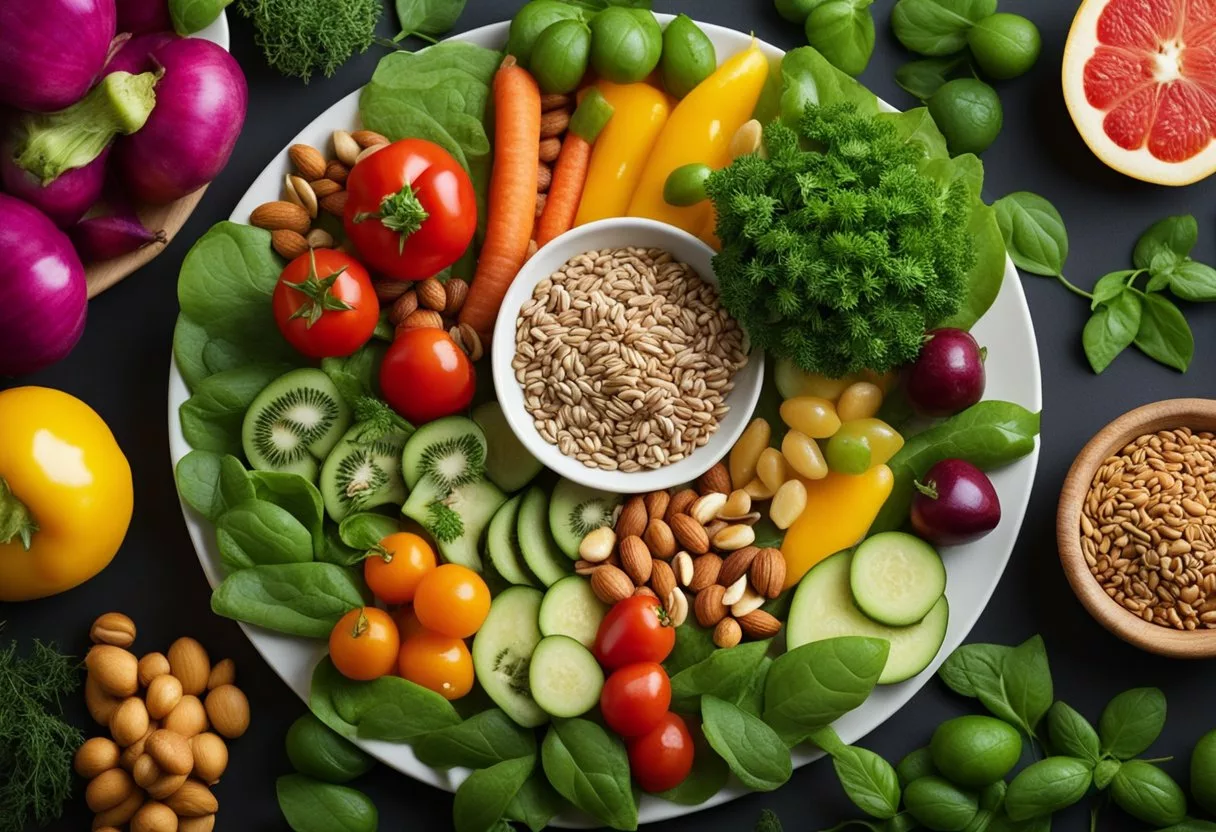
Vegetarian keto lunches offer a delicious harmony of high-fat, low-carb ingredients while providing necessary nutrients through a variety of vegetables. These ideas showcase how one can maintain a vegetarian keto diet without sacrificing flavor or variety.
Vegetarian Keto Club Salad
Ingredients:
- Mixed greens
- Sliced avocado
- Cherry tomatoes
- Cucumber
- Hard-boiled eggs
- Feta cheese, crumbled
- Olive oil
- Red wine vinegar
Instructions:
- Layer the mixed greens in a large bowl.
- Top with avocado, tomatoes, cucumber, and eggs.
- Sprinkle feta cheese over the salad.
- Drizzle with olive oil and red wine vinegar before serving.
This salad brings the traditional club sandwich appeal but keeps it low-carb with fresh veggies and healthy fats from avocado.
Stuffed Peppers Delight
Ingredients:
- Bell peppers
- Cauliflower rice
- Shredded cheese
- Black olives, sliced
- Onion, diced
- Garlic, minced
- Cumin
- Coriander
Instructions:
- Preheat oven to 350°F (175°C).
- Hollow out bell peppers and set aside.
- Sauté onion and garlic until translucent.
- Mix in cauliflower rice, olives, cheese, cumin, and coriander.
- Fill peppers with mix and bake for 25-30 minutes.
Stuffed peppers make a colorful and satisfying lunch, packed with nutrient-rich veggies and melty cheese, perfectly aligned with a vegetarian keto lifestyle.
Buddha Bowl Variations
Base Ingredients:
- Spinach or kale
- Shredded cabbage
- Sautéed mushrooms
- Steamed broccoli
- Avocado
Protein Add-ins:
- Tofu, baked or fried
- Tempeh, grilled
- Hard-boiled eggs
Dressing Options:
- Tahini sauce
- Creamy avocado dressing
- Lemon vinaigrette
Instructions:
- Choose your base and arrange in a bowl.
- Add in a portion of your chosen protein.
- Top with your preferred dressing.
Buddha bowls are a versatile option for keto lunch, where one can mix various low-carb vegetables and proteins, topped with a keto-friendly dressing to add flavor and creaminess.
Dinner Solutions
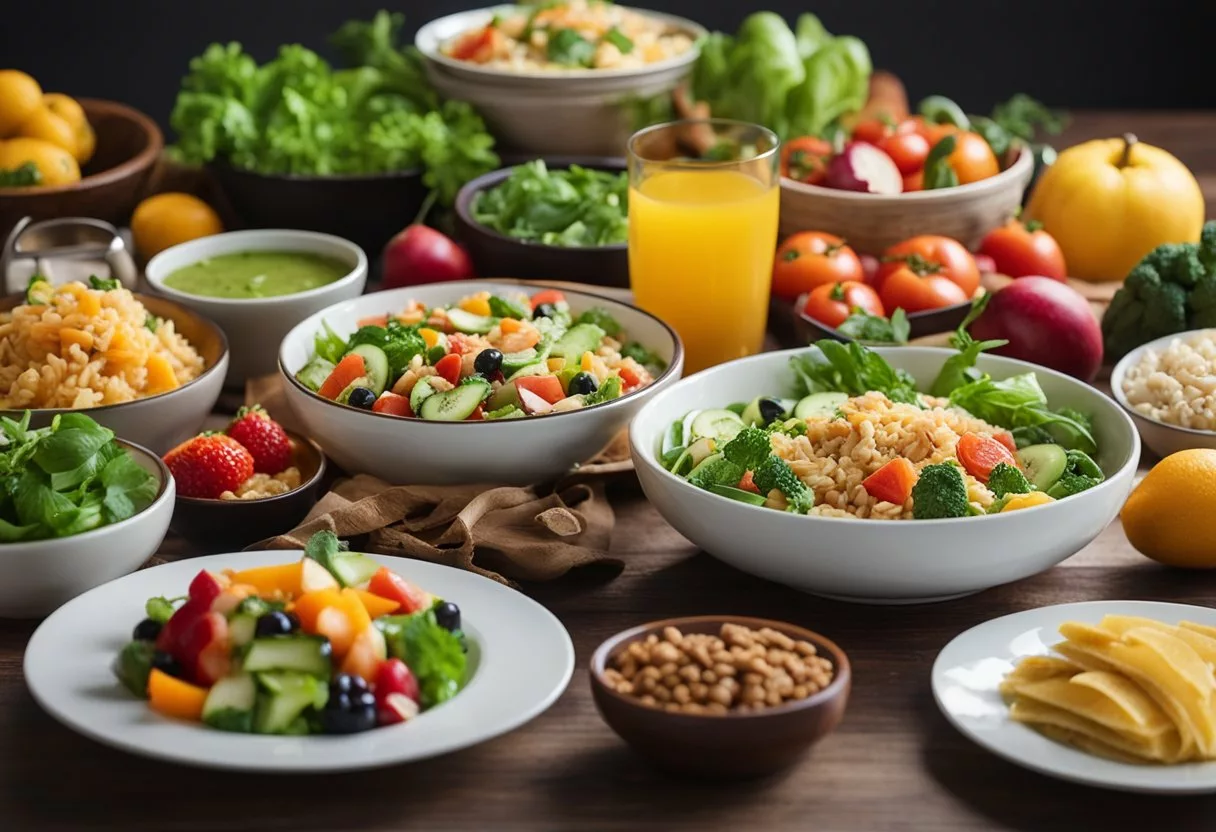
Crafting a satisfying keto-friendly dinner can be a challenge for vegetarians, but these innovative recipes ensure a delicious end to the day while adhering to low-carb requirements. Each dish substitutes common high-carb ingredients with nutrient-dense, keto-appropriate alternatives, providing a hearty dinner experience without compromising dietary goals.
Zucchini Noodles & Pesto
Zucchini noodles, also known as “zoodles,” serve as the perfect low-carb substitute to traditional pasta. Tossed in a rich, homemade pesto sauce made with fresh basil, garlic, Parmesan cheese, and pine nuts offers a harmonious blend of flavors while maintaining a keto-friendly profile.
Cauliflower Mac and Cheese
Cauliflower steps in for macaroni in this classic comfort dish, creating a Cauliflower Mac and Cheese that is both satisfying and low in carbohydrates. The cauliflower is smothered in a creamy cheese sauce, often including a mixture of sharp cheddar and cream cheese, which ensures that the dish stays within the vegetarian keto framework.
Eggplant Parmesan Casserole
Eggplant Parmesan Casserole is a fulfilling dinner choice that layers roasted eggplant with marinara sauce, mozzarella, and parmesan cheese. This casserole offers a delectable melting texture and rich taste while maintaining the diner’s commitment to a low-carb, vegetarian keto lifestyle.
Snacks and Side Dishes
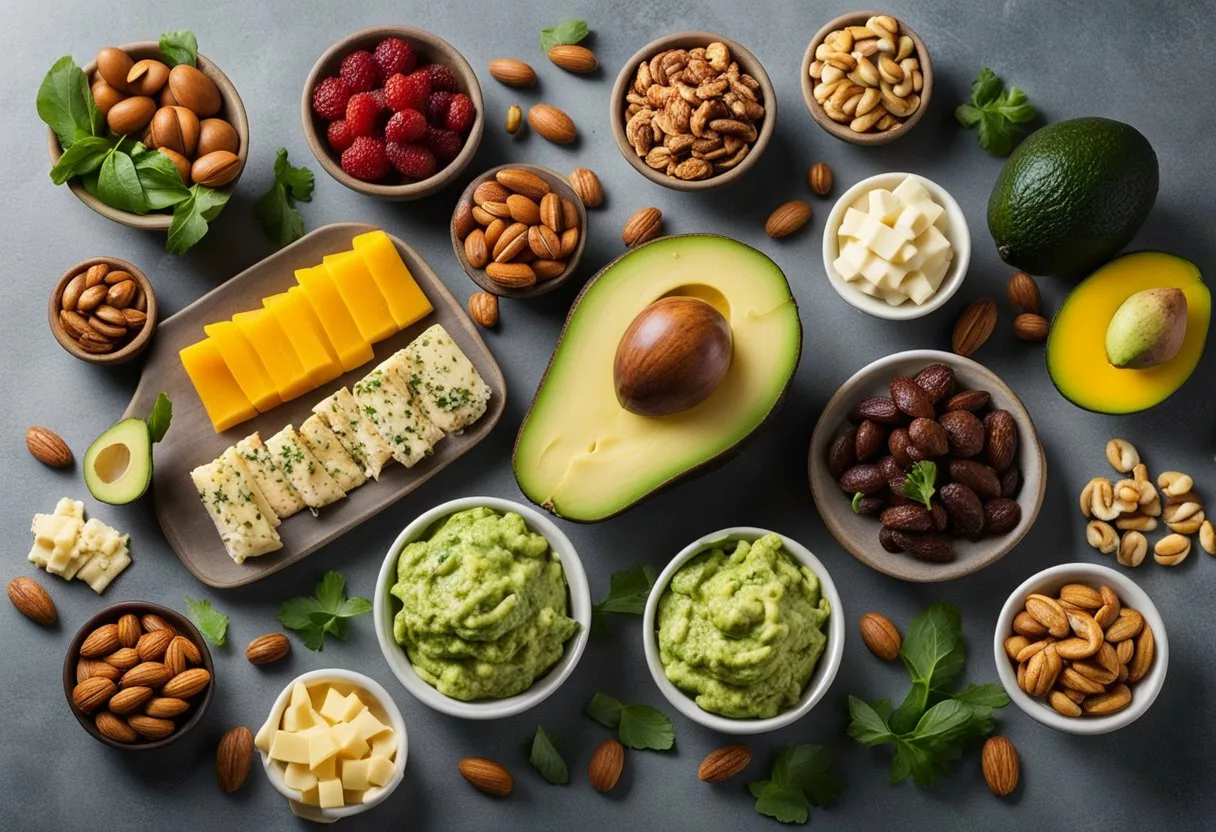
In the realm of vegetarian keto, snacks and sides are pivotal for maintaining a low-carb diet while satisfying cravings. They focus on keto-friendly vegetables, ensuring a balance between delicious flavors and nutritional needs.
Kale Chips Crunch
Kale chips offer a nutritious and satisfying snack, fulfilling the need for something crunchy without the carbs. They are made by tossing fresh kale leaves in olive oil and a pinch of salt, then baking them until they’re crispy. Nutrients per serving: low in net carbs and rich in vitamins A and K.
- Instructions:
- Preheat oven to 350°F (175°C).
- Wash and dry kale leaves; tear into bite-size pieces.
- Toss with a tablespoon of olive oil and a sprinkle of salt.
- Spread on a baking sheet and bake for 10-15 minutes until edges are brown but not burnt.
Avocado and Bell Pepper Nachos
Bell Pepper Nachos replace traditional corn chips with slices of bell pepper topped with mashed avocado, a generous sprinkle of cheese, and any other keto-compliant toppings. They deliver a textural contrast and vibrant flavors while staying within the guidelines of a keto diet. Nutrient profile: High in healthy fats and fiber, with a sufficient amount of protein.
- Instructions:
- Slice bell peppers into nacho-sized pieces.
- In a bowl, mash ripe avocados; add lime juice and salt to taste.
- Spoon the avocado mixture on each bell pepper slice.
- Top with shredded cheese and broil until melted. Optional: garnish with cilantro or diced tomatoes.
These options ensure one can enjoy guilt-free snacking and sides while on a vegetarian keto diet.
Keto Vegetarian Meal Plans and Tips
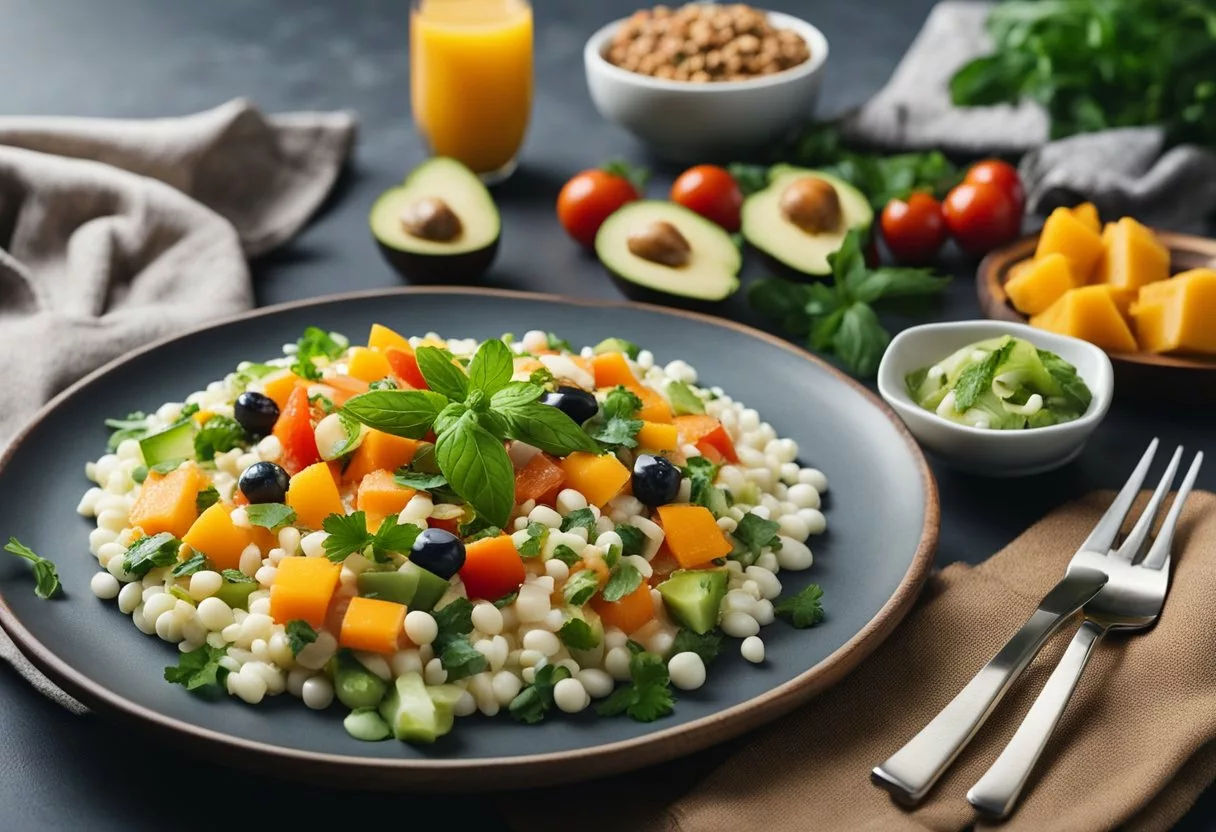
Crafting a vegetarian keto meal plan requires careful consideration to balance macronutrients and ensure the inclusion of a variety of low-carb vegetables. Meal planning is simplified with strategic ingredient substitutes that align with keto guidelines.
Creating a Balanced Keto Meal Plan
When creating a vegetarian keto meal plan, one should strive to include a mix of low-carb, high-fat ingredients that maintain ketosis while also providing ample nutrients. Start by planning meals around keto-friendly vegetables like broccoli, spinach, and cauliflower. Incorporating a variety of these vegetables ensures that the meals are rich in fiber and micronutrients.
It’s essential to include protein sources like tofu, tempeh, and high-fat dairy products (for lacto-vegetarian diets), such as cheese, to meet one’s protein needs. Plan meals that combine these proteins with fats from sources like avocados, nuts, and seeds. Vegetarian keto meal plans can also benefit from the inclusion of eggs, if allowed within one’s dietary preferences.
Sample Vegetarian Keto Meal (Dairy Included):
- Breakfast: Keto mushroom omelet with spinach and feta
- Lunch: Roasted turmeric cauliflower with a kale and blueberry salad
- Dinner: Zucchini noodles with a creamy avocado pesto sauce
Sample Vegetarian Keto Meal (Dairy-Free):
- Breakfast: Chia seed pudding with almond milk and a dash of cinnamon
- Lunch: Grilled eggplant slices with almond-based ricotta cheese substitute
- Dinner: Cauliflower rice with stir-fried bok choy and sesame seeds
Substitutes for Common Non-Keto Ingredients
Many traditional vegetarian meals are carbohydrate-heavy, but one can modify them to fit keto by using creative substitutions. Replace starchy ingredients like potatoes or rice with cauliflower—making cauliflower “mashed potatoes” or “rice”. Use almond or coconut flour instead of wheat flour to make gluten-free, keto-friendly bread and desserts.
For a dairy-free approach, replace regular dairy products with plant-based alternatives like coconut cream, almond cheese, or cashew-based cheese spreads. Nutritional yeast is a popular choice for a cheese-like flavor without the dairy, adding both texture and a nutrient boost to meals.
Common Ingredient Substitutions:
| Non-Keto Ingredient | Keto Substitute |
|---|---|
| Potato | Cauliflower |
| Rice | Shirataki rice |
| Pasta | Zucchini noodles |
| Flour | Almond or coconut flour |
| Sugar | Stevia or erythritol |
| Milk | Unsweetened almond milk |
By implementing these substitutions, one can enjoy vegetarian keto meals that are not only low in carbs but are also diverse and satisfying.
Keto-Friendly Vegetarian Desserts
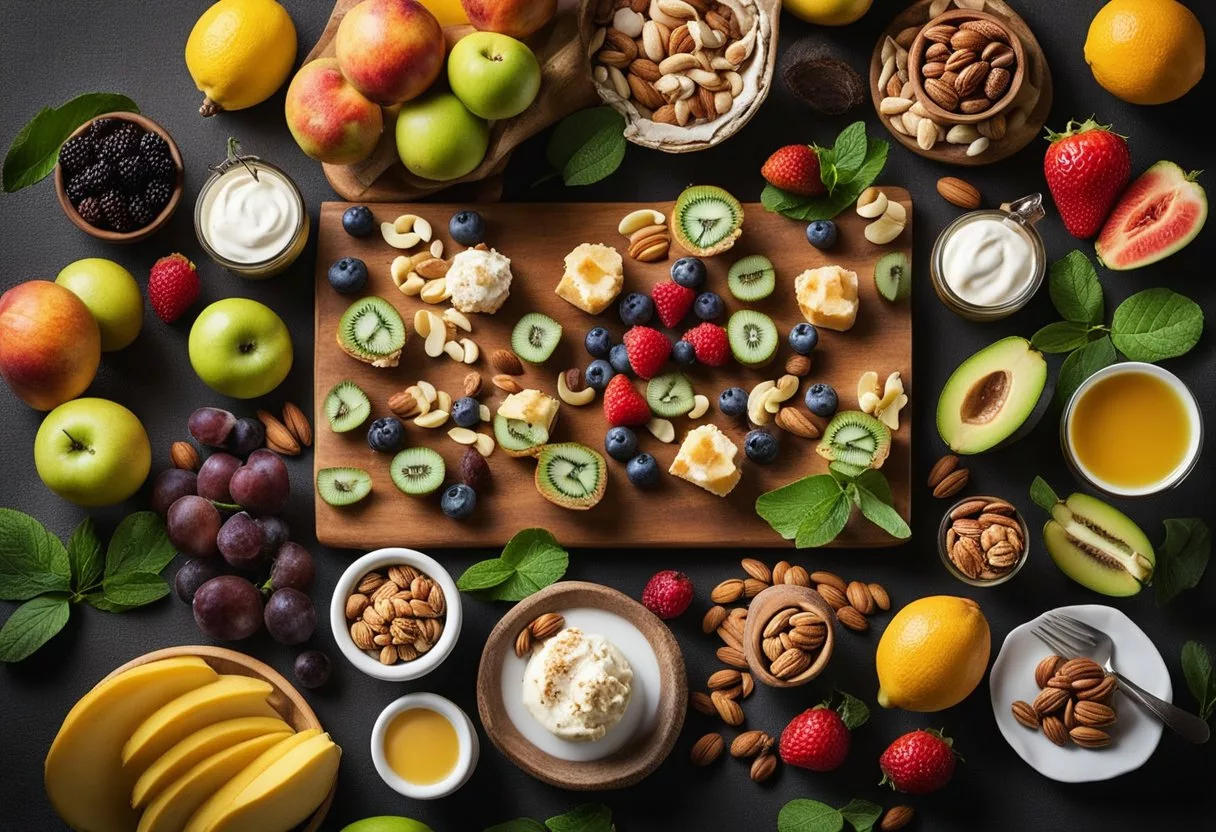
Transitioning to a vegetarian keto diet does not mean sacrificing the pleasure of desserts. This section offers two satisfying, keto-friendly vegetarian dessert options that cater to those avoiding dairy and seeking healthier alternatives to traditional sweets.
Dairy-Free Keto Mousse
The Dairy-Free Keto Mousse is a creamy and luscious treat that satisfies those chocolate cravings without derailing one’s dietary goals. To prepare this dessert, one would typically blend avocados for a rich base, utilizing cocoa powder for the chocolate flavor, and a keto-friendly sweetener like erythritol or stevia to ensure it aligns with keto guidelines. The result is a smooth and indulgent mousse that is both dairy-free and keto-compliant.
Keto Almond Butter Brownies
Keto Almond Butter Brownies offer a delectable twist to the classic brownie, using almond butter as the key ingredient to add richness and a moist, fudgy texture. Essential components include a blend of almond flour and cocoa powder, with a keto-friendly sweetener and a flaxseed meal mixture to replace traditional eggs. These brownies are a delightful addition to the vegetarian keto dessert repertoire, providing a sumptuous yet low-carb option for those seeking sweets that fall within their dietary preferences.
Maintaining Health and Well-Being
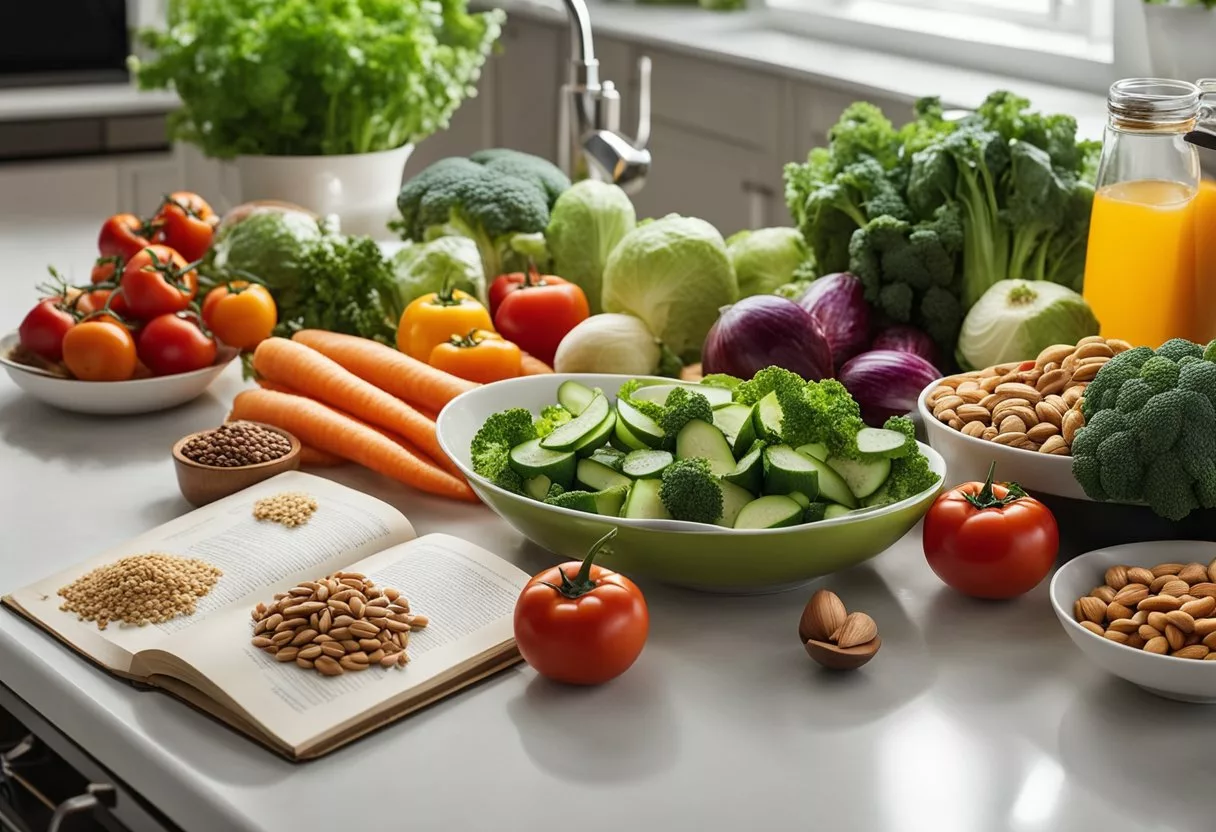
Adhering to a keto diet while being vegetarian requires careful planning to ensure nutritional needs are met. This particularly involves monitoring vitamin and mineral intake and ensuring adequate protein levels are sustained.
Vitamin and Mineral Considerations
Vitamins and Minerals:
- Vitamin B12: Often found in animal products, vegetarians should seek out fortified foods or supplements.
- Iron: Plant-based iron is less absorbable, so intake of iron-rich foods like spinach and legumes, possibly combined with vitamin C sources to enhance absorption, is recommended.
- Calcium: Crucial for bone health, one can consume fortified plant milk and leafy greens to maintain adequate levels.
- Omega-3 Fatty Acids: Found in flaxseeds and walnuts; important for cardiovascular health.
It is vital for individuals following vegetarian keto recipes to incorporate nutrient-dense foods and consider supplementation to fill any dietary gaps.
Protein Adequacy in Vegetarian Keto
Protein Sources in a Vegetarian Keto Diet:
- Eggs: A complete protein source for ovo-vegetarians.
- Nuts and Seeds: Almonds, chia seeds, and hemp seeds are protein-rich options.
- Cheese: For lacto-vegetarians, cheese can provide essential amino acids.
- Low-Carb Plant Proteins: Including tofu and tempeh, which also offer flexibility in recipes.
Proteins are essential for muscle repair and hormone production. Individuals should prioritize varied protein sources to ensure they receive all essential amino acids, paying attention to the carb content to stay within the keto framework.
Sourcing Quality Ingredients
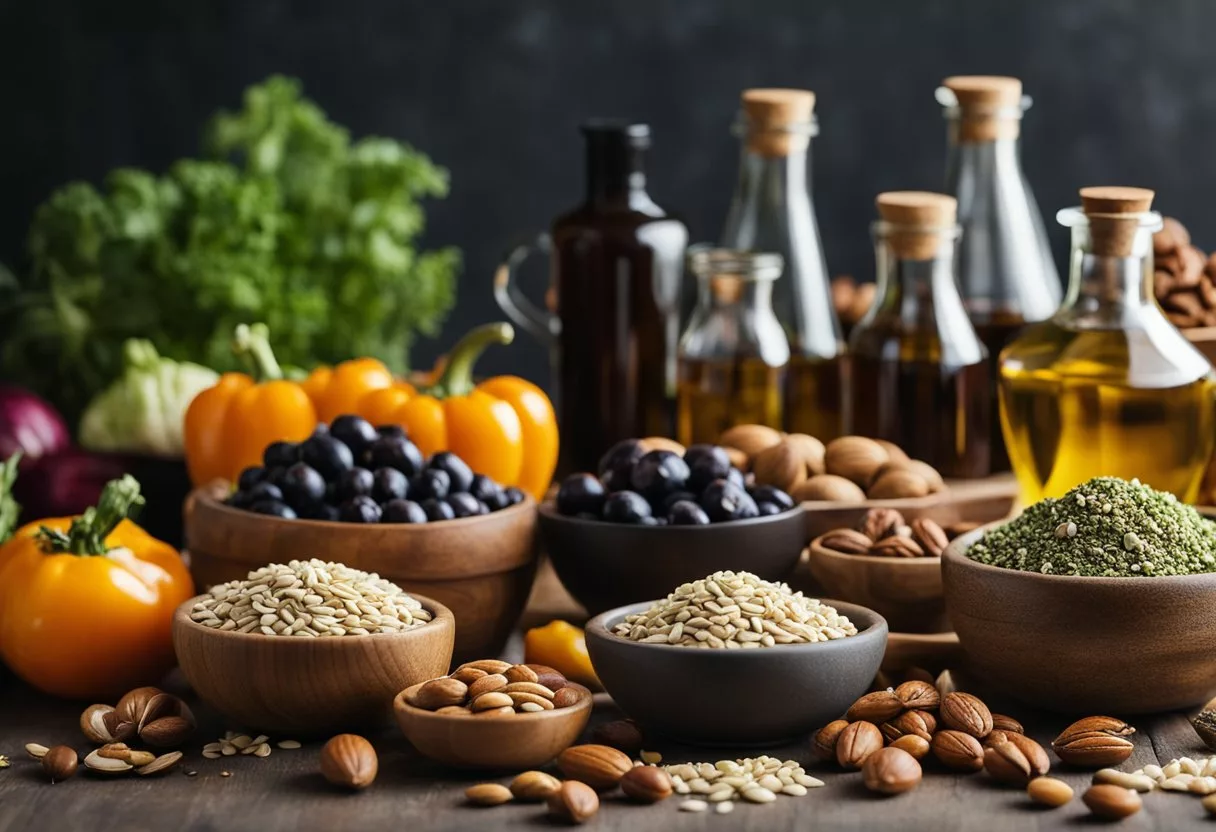
Selecting high-quality ingredients is crucial for the success of vegetarian keto recipes. The right ingredients ensure that meals are not only palatable but also adhere to the ketogenic dietary standards of being low in carbohydrates while still providing essential nutrients.
Organic vs. Non-Organic Choices
When it comes to ingredients for vegetarian keto recipes, the debate between organic and non-organic often centers on pesticide use and nutrient density. Organic vegetables are grown without synthetic pesticides and may have a better nutritional profile, which can be particularly important when one’s diet is restricted, as with keto. They, however, tend to be pricier.
Table: Price Comparison of Organic vs. Non-Organic Keto-Friendly Vegetables
| Vegetable | Organic Price | Non-Organic Price |
|---|---|---|
| Cauliflower | $3.00 per lb | $2.00 per lb |
| Zucchini | $1.75 per lb | $1.25 per lb |
| Kale | $4.00 per bunch | $3.00 per bunch |
Prices are approximate and may vary.
Locally Sourced Vegetables
Locally sourced vegetables are often fresher, and their reduced transport time can help maintain their nutritional value—a key consideration for keto dieters who need nutrient-dense food to compensate for the strict carb limits. By purchasing from local farmers’ markets or community-supported agriculture (CSA), consumers also support the local economy and can often find a variety of seasonal vegetables that may inspire new vegetarian keto recipes.
- Examples of Keto-Friendly Local Vegetables:
- Kale
- Arugula
- Celery
- Mushrooms
By selecting the right organic and locally sourced ingredients, individuals adhering to a vegetarian keto diet can enjoy delicious and nutritious meals that support their health goals.
Trends in Vegetarian Keto Cooking
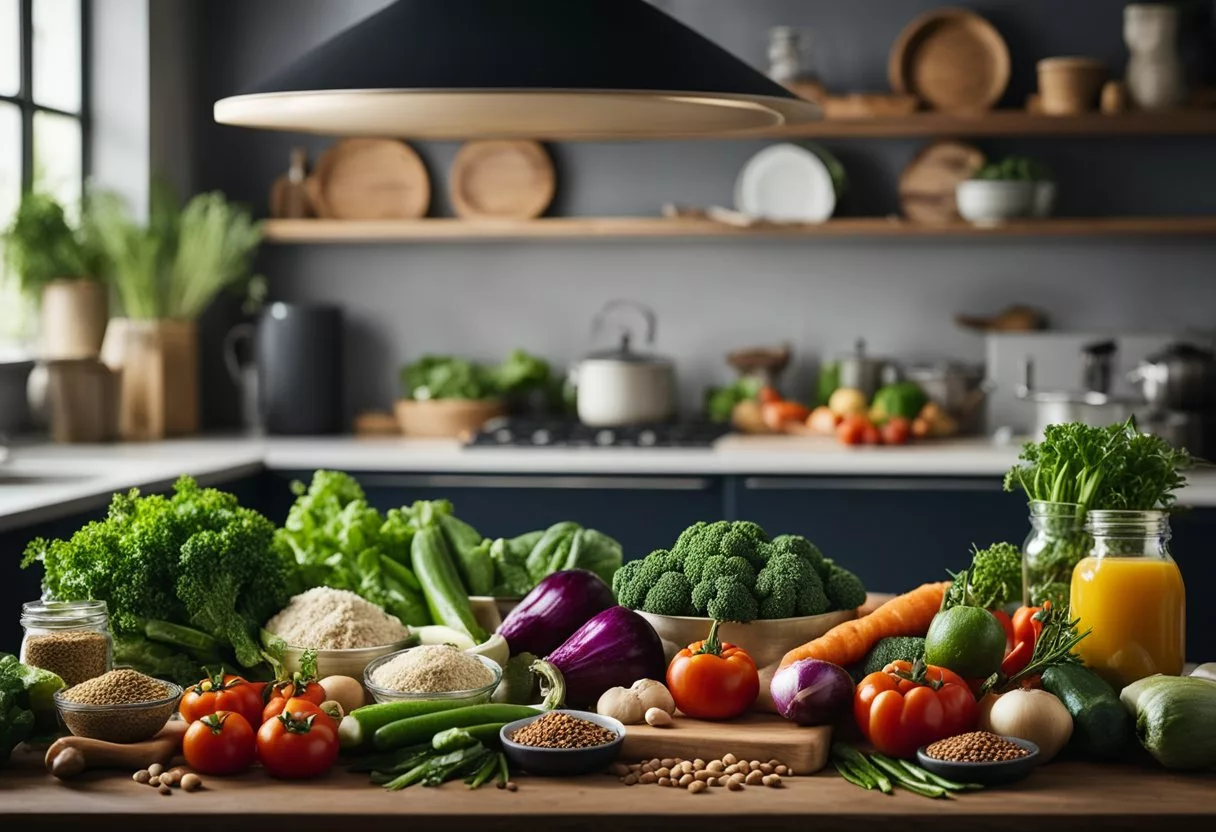
The landscape of vegetarian keto cooking is ever-evolving, with ongoing innovations and an increasing variety of keto-friendly products tailored to vegetarians.
Innovative Keto Recipe Developments
The culinary world has seen a surge in creative vegetarian keto recipes, transforming classic dishes into low-carb delights. Cauliflower, for example, has become a staple substitute, morphing into a keto-friendly “mac and cheese” that maintains a creamy texture without the high-carb content of traditional pasta. Zucchini, another versatile ingredient, is being transformed into satisfying pancakes, delivering a familiar comfort food experience for those on a vegetarian keto diet.
Rising Vegetarian Keto Products
Market shelves are increasingly being stocked with a wide array of vegetarian keto products, from pre-made vegetarian burritos to keto club salads. These products aim to simplify the keto lifestyle for vegetarians, ensuring that a keto-friendly meal is convenient and accessible. Noteworthy developments include:
- Ready-to-eat meals: Offering balanced, low-carb nutritional profiles suitable for quick lunches or dinners.
- Specialty ingredients: An expansion in keto-friendly flours, sweeteners, and vegetarian proteins provides home cooks with the tools needed to explore new recipes.
The tracking of trends and products development in vegetarian keto cooking reflects an adaptation to a health-conscious, lifestyle-driven consumer base that values both dietary needs and time efficiency.
Frequently Asked Questions
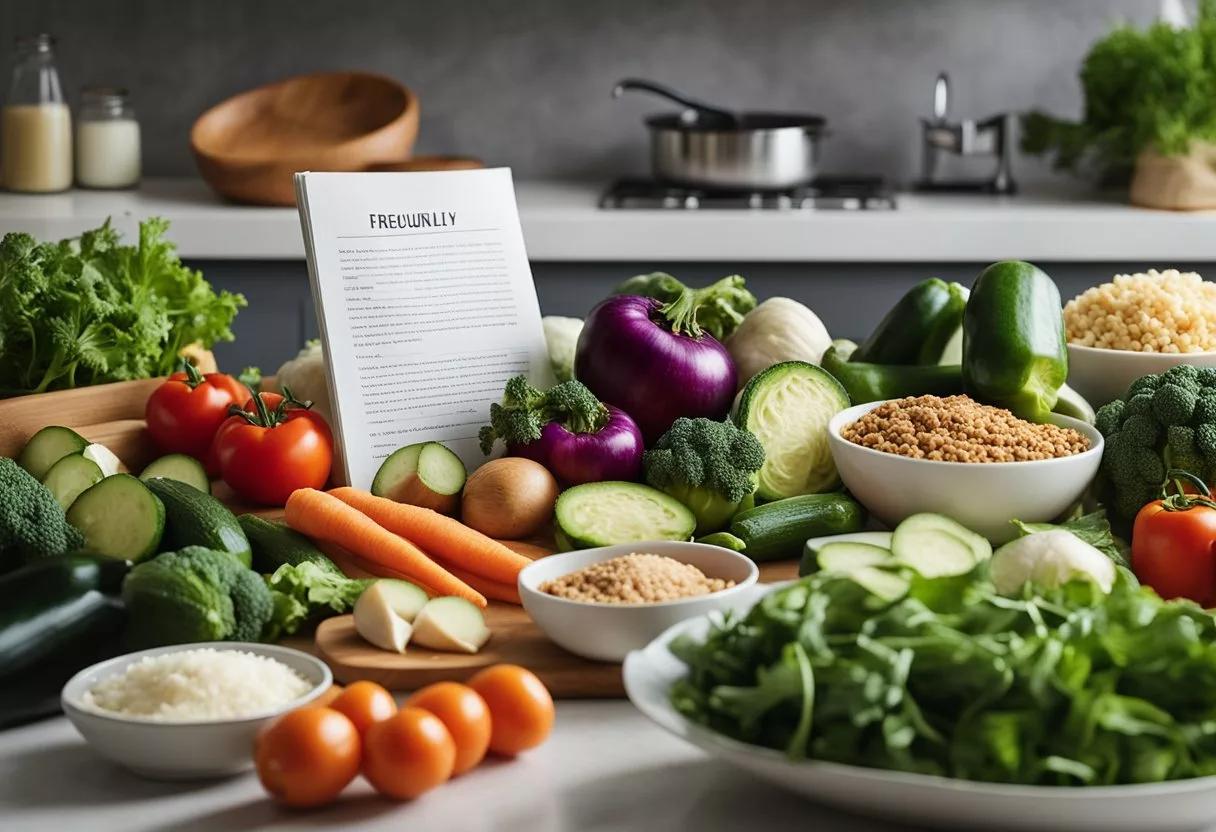
Adapting to a vegetarian ketogenic diet often brings many questions regarding protein sources, recipe modifications, and meal ideas. This FAQ section aims to address common queries with concise and informative answers.
What are some high-protein vegetarian foods suitable for a keto diet?
High-protein vegetarian foods that are keto-friendly include tempeh, seitan, Greek yogurt, and certain cheeses. These options can help meet protein requirements without exceeding carbohydrate limits.
How can I adapt Indian cuisine to fit a vegetarian keto diet?
Indian cuisine can be adapted for a vegetarian keto diet by substituting high-carb ingredients like rice and potatoes with cauliflower rice or mashed turnips, and using coconut cream or almond flour in place of traditional thickeners.
What are some effective vegetarian keto recipes for weight loss?
For weight loss, one can focus on recipes that include high-fiber vegetables like spinach and zucchini, combined with fats from avocados or nuts. Cauliflower mac and cheese and zucchini pancakes serve as low-carb, high-nutrient options.
Could you suggest simple vegetarian keto meal ideas for beginners?
Simple meal ideas for beginners include egg-based dishes like omelets or frittatas with low-carb vegetables, as well as salads topped with high-fat dressings and seeds for extra protein.
What does a sample 7-day vegetarian keto meal plan look like?
A sample 7-day meal plan could include a rotation of meals like almond flour pancakes for breakfast, spinach and cheese stuffed mushrooms for lunch, and eggplant lasagna for dinner, ensuring each day varies to meet nutritional needs.
Which vegetables should I avoid to maintain ketosis on a vegetarian diet?
To stay in ketosis, avoid starchy vegetables like potatoes, corn, and peas, and focus on leafy greens, broccoli, cauliflower, and other non-starchy options that are low in carbohydrates.

Comments are closed.